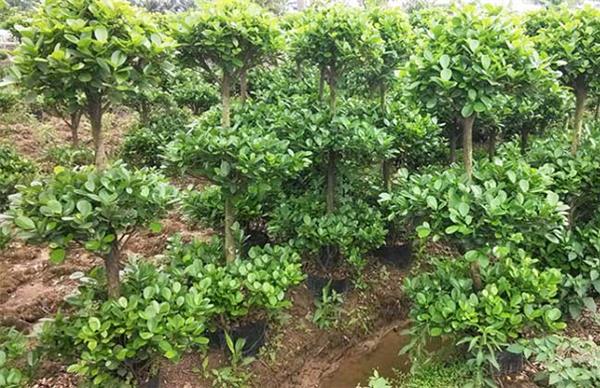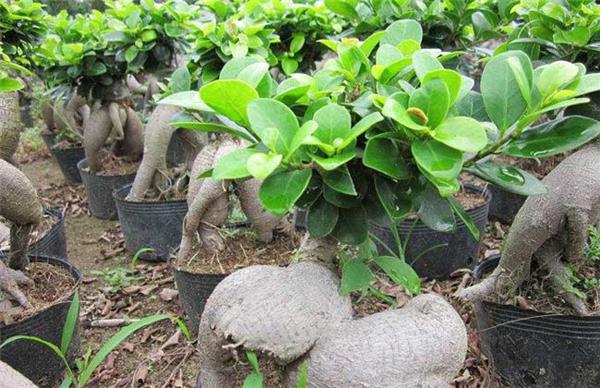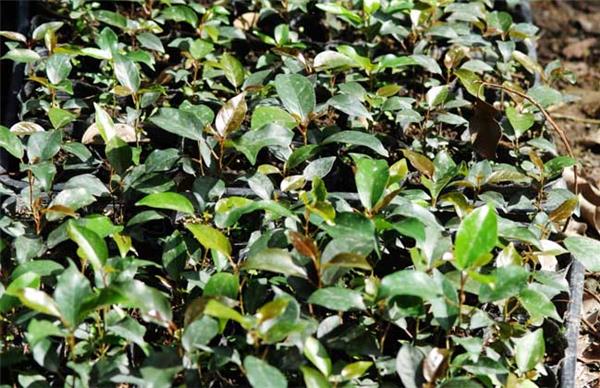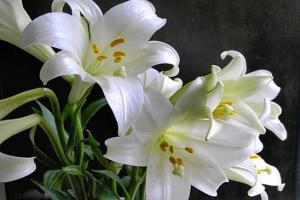How do banyan trees reproduce? Introduction to the propagation methods of banyan trees
Banyan trees, also known as fine-leaf banyan, evergreen, banyan beard, etc., can be used as street trees, bark fibers can be used to make fishnets and artificial cotton, air roots, bark and leaf buds can be used as heat-clearing and antipyretic drugs, and common breeding methods are common, such as cutting, pressing, burying, and so on. In the greenhouse in the north, it is often carried out during green summer and combined with shaping and pruning, and occasionally there are methods of sowing and breeding or field control. Let's take a look at these breeding methods of banyan trees.

Cuttage propagation
After the temperature warmed up in spring, the 1-2-year-old branches were cut into segments 5-15 m long, each containing 3-4 bud nodes, the lower leaves were removed and the upper one was retained. When the blade is large, it is rolled into a tube and tied tightly with string. The cuttings are inserted in sand beds or flowerpots, accounting for 1. 3 of the cuttings. After insertion, it is covered with plastic film for moisturizing and heat preservation, and the temperature is controlled at about 25 ℃. After 30-45 days of rooting and sprouting, it can be transplanted into the pot, and the rooting can be promoted by using ABT1 rooting powder before planting.

Striping propagation
The family culture of banyan can be propagated by pressing strips or high branches. Part of the branch will be put into the middle, compacted and watered, generally after about 30 days to take root. The method of high branch pressing is to select the 2-year-old branch, peel the smooth part of the branch in a ring, peel 1.0-1.5 cm wide, wrap the wound with wet peat, moss, etc., and finally wrap it with plastic film, bind the upper and lower ends, and tie several small holes in the film. Cut off the potted plant after the root grows.

Sowing and reproduction
The root system of banyan seedlings is developed, easy to shape, and more seeds are used to propagate. Sowing seeds should be along with seed collection, treatment and sowing. First wrap the ripe berries with cotton gauze, scrub and wash them in clean water, then sow them directly in the finished sand bed or flowerpot after 2-3 days, remove the sowing, do not cover the soil, spray clean water 1-2 times a day, and keep the bed moist. Under the condition of 25-30 ℃, ten plants sprouted one after another 10 days after sowing. Plastic arch sheds should be built on the bed surface after sowing to prevent heavy rain from scouring. After 15 days of growth, 1% urea or potassium diargon phosphate was sprayed on the leaf surface. Transplant into the basin when it grows to 6-7 leaves.

Grafting propagation
1. Green branch grafting: selection is growing. However, the uncapped healthy twigs of the same year were used as rootstocks, and the mature twigs of fine varieties were used as scions for grafting. Stop watering a few days before grafting to reduce excessive bleeding during grafting. The thickness of the rootstock and the scion must be the same. The scion is 2-3 cm long, leaving the terminal bud and the uppermost 2 leaves, and the lower end is cut into a "V" shape. Cut off the top of the rootstock and cut it down vertically along the pith with a blade to 1 cm. Insert the scion into the "V"-shaped slot of the rootstock, align the edge of the cambium, and bind it tightly with plastic film. Finally, cover it with a thin film, water it thoroughly, put it in a ventilated and bright place, and uncover the film for ventilation once a day. Generally, it takes about 45 days to survive and release.
2. Hard branch grafting: grafting before budding and growth in spring. The diameter of the branch and stem of the rootstock should be more than 1 cm. The scion is about 0.8 cm in diameter and 5 cm in length, leaving a single bud but no leaves. Cut flat at the interface of the rootstock during grafting and cut vertically at the interface of the rootstock according to the diameter of the scion. Then insert the wedge-shaped lower end of the scion into the slit of the rootstock, align the two cambium, and bind it tightly with a plastic film. Finally, the interface is sealed with a thin film to prevent moisture loss. After grafting, remove the leaves below the grafting place of the rootstock to promote scion sprouting and branching.
On the breeding methods of banyan tree Xiaobian introduced here, I hope to help you!
Related
- Wuhan Hospital Iron Tree Blooming Result Was Instantly Frightened by the Gardener Master
- Which variety of camellia is the most fragrant and best? Which one do you like best?
- What is the small blue coat, the breeding methods and matters needing attention of the succulent plant
- Dormancy time and maintenance management of succulent plants during dormancy
- Minas succulent how to raise, Minas succulent plant pictures
- What are the varieties of winter succulent plants
- How to raise succulent plants in twelve rolls? let's take a look at some experience of breeding twelve rolls.
- Attention should be paid to water control for succulent plants during dormant period (winter and summer)
- Watering experience of twelve rolls of succulent plants
- Techniques for fertilizing succulent plants. An article will let you know how to fertilize succulent plants.



